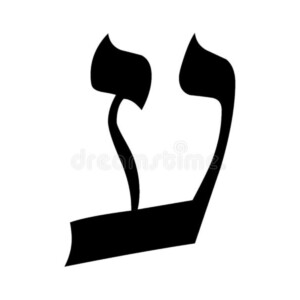The tenth month of the Jewish calendar is known as Tevet. The three winter months of Tevet, Shevat and Adar, which correspond to the three tribes of the camp of Dan (Dan, Asher and Naftali), located to the north of the camp, begin with the month of Tevet.
The month of Tevet – The First Month of Winter (Boreal)
The last days of Hanukkah, which reach their peak on the eighth day, Zot Chanukah, mark the beginning of Tevet.
The tenth day of the tenth month, which is observed as “the tenth shall be holy to God,” is fast in remembrance of the siege of Jerusalem, which marked the beginning of the destruction of the Temple.
According to the year in which it took place, the 17th of Tammuz, the 9th of Av, the 3rd of Tishrei and the 10th of Tevet are the four days on which we remember the destruction of the Temple. Regarding these four days, the prophets declare (according to the appropriate month):
“The fasts of the fourth, fifth, seventh and tenth shall be (in the future) for the house of Judah for rejoicing, joy and festivity.”
Numbers 4,5,7
If we add the four numbers 4,5,7 and 10 we get 26, the value of the ineffable Name of God’s mercy, Havai’ah. The dates of the four days mentioned 17, 9, 3 and 10 add up to 26 and 13, 13 being the value of the word Echad “one”.
26 and 13 = 39 is the numerical value of Havaiyah Echad [“Havaiyah is one”]. 26 [the value of the months] plus 13 [the value of the days] = 65 = Adnut).
Following the progression, the next three numbers are 14, 19 and 25, which add up to 58 – Jen (“grace”).
The first seven numbers of the progression (“all sevenths are beloved”), together with 26 – Havaiyah – equals Janoch (whose name comes from the word “education” and “initiation”, it is an acronym for “grace of Havaiyah”), the seventh generation (“beloved”) since Adam.
All fasting dates, if observed correctly, bring about the descent of grace from its source of mercy, God’s Name Havaiyah.
Personifying this process (according to the order of the year, in the words of the prophet) is the tenth of Tevet (in the secret of “the end [the last fast day of the year] is included in the beginning [of the events that led to the destruction]”).
Indeed, by Divine Grace, the third and eternal Temple is built, first in the heart of Israel and then manifested physically on earth.
Letter: ain

That means “eye”. The rectification and annulment of the “evil eye” take place during the month of Tevet. Tevet, meaning “the good eye”, derives from the Hebrew word Tov, meaning “good” (the source of the power to bless, as it is said: “the good eye will bless”).
Observing the Chanukah luminaries marks the beginning of this correction (especially when they are completed on the eighth day).
The “evil eye” of hatred, or the hatred of the profane for the sacred, is the starting point of every destructive process (the secret of ten, the sacred number already mentioned).
Anger, the fire of destruction, is born of hatred. The letter of the word “hate”, Kaas, is ain. It is necessary first to rectify the negative Kaas to its corresponding positive.
Mazal: “guedi” (capricorn – goat)
The sages say that a child “jumps like a child” when he reaches the age of ten (a reference to the tenth month and the level of ten in general) (Midrash Kohelet). Playfully jumping “like a child” reflects a critical stage in the growth process.
Tevet, which pertains to the tribe of Dan, has to do with the transformation from immaturity to maturity.
The phrase “evil eye” refers to immaturity, while “good eye” refers to maturity. Tov, or “good,” is Guedi (17). For the latent rage in our animal souls to be corrected and made sweeter, we must play and jump like children.
Tribe: Dan
The initial stage of the immaturity of the soul, which “matures” during the month of Tevet, is represented by this tribe. Dan is a verb of adjudication. At first, it harshly judges reality and other people (the “evil eye”).
It is the character of a spiritually immature person. Dan is compared to a snake that bites venomously in anger. The eye of the serpent is known as the “evil eye”. Dan’s rectification involves entering into a conflict between holy anger and evil anger.
According to the sages, only someone with Dan’s spiritual ancestry can leap up and kill the evil serpent: “one like him, he killed it.”
358 + Nachash (the serpent) = Mashiach. Dan’s holy energy reflects the spark of Mashiach. According to the Zohar, the military commander-in-chief of Mashiach’s army will be a member of the tribe of Dan.
Sense: anger (kaas or roguez)
The soul’s ability to elevate our good inclination to become angry above the evil inclination is known as the sense of holy anger (the rectification of the month of Tevet). Be angry and do not commit sin, our sages instruct us in the commentary to the verse from Psalms mentioned above.
Positive anger conveys the soul’s intense concern and desire for reality to improve.
Although there is a certain immaturity in this anger (since the absolute maturity of the Creator of Reality alone perceives [with the eye of Tevet] everything as good), it is still stated that “because Israel is (behaving like) a child and (therefore) I (God) love him” in spite of it.
In Chassidut, we learn that in order to lower and subjugate one’s ego, one must direct his left (“bad”) eye towards himself (with the holy fury of his innate good against his innate evil) while simultaneously directing his right (“good”) eye towards the outside world (so that with that power he may help perfect one’s own reality).
Controlling organ: the liver (kaved)
The liver is angry. The work of the liver is to cleanse the blood of which it has become saturated. It is the kabbalistic representation of the original serpent, whose rectification Dan personifies.
Mind, heart and liver, representing Adam, Eve and the serpent, respectively, are the three “rulers” of the body and soul.
The serpent in Kabbalah
It symbolizes the infancy of the soul, which is characterized by an attribute of unresolved rage.
The serpent’s venom burns like the fire of anger (see the month of Jeshvan). When used for good, the fire (along with the blood of the liver) helps to warm the cold month of Tevet.
Kaved = 26 = Havaiyah
This reveals the previously discovered secret that the sum of the four months – ending in Tevet – during which we “fast” for the destruction of the Temple (by the poison of the primordial serpent) equals 26.
By fasting in response to the destruction, we cleanse our liver, season our anger and thereby “sweeten” God’s anger (against Israel, the reason for the destruction), arousing His mercy to erect the Temple.
Related posts
- Harness the positive energy of Capricorn according to the Kabbalah
- Hanukkah — The Feast of Lights
- Bein Hametzarim 2022 – Three Weeks from Tammuz 17 to Av 9
With information from Gal Einai Institute





